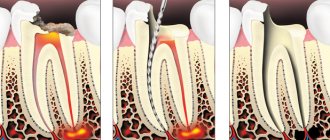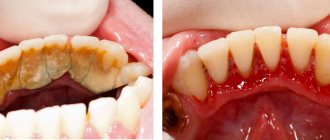Anonymously
Around the clock
Attention! The material contains information about substances, the use of which can cause serious harm to your health!
To most people, smoking cigarettes seems to be nothing more than a bad habit. Meanwhile, nicotine is officially classified as a seriously addictive alkaloid, on a par with cocaine, caffeine and quinine. All of these substances have a significant effect on the functioning of the nervous system.
Today, tobacco addiction is considered one of the most difficult to treat, since nicotine forms a very serious psychological attachment, affecting our unconscious behavior and even the area of reflexes.
- Nicotine overdose: what is it?
- Causes of nicotine poisoning
- Symptoms of cigarette overdose
- Stomach hurts after smoking
- Gag reflex when smoking
- Chest pain after smoking
- Weakness after cigarettes
- Fainting from smoking
- Nausea after cigarettes: reasons
- Sick of menthol cigarettes
- Sick of electronic cigarettes
- Overdose from vaping
- Nicotine hit
- Signs of acute nicotine poisoning
- Consequences of nicotine overdose
- Lethal dose of nicotine for humans
- Allergy to nicotine
- First aid for nicotine poisoning
- Treatment of nicotine poisoning in
Base
- Narcologist on call 24/7, within 40 minutes
- Consultation with a narcologist
- Dropper 500 ml
- Purpose of therapy
- Tablet course for three days
- Monitoring the patient's condition after the procedure
4,700 RUB
Call a doctor
Standard
- Narcologist on call 24/7, within 40 minutes
- Medical examination
- Consultation with a narcologist
- Dropper 1000 ml
- Purpose of therapy
- Tablet course for three days
- Monitoring the patient's condition after the procedure
5900 RUB
Call a doctor
Intensive
- Narcologist on call 24/7, within 40 minutes
- Medical examination
- Consultation with a narcologist
- Dropper 1500 ml
- Purpose of therapy
- Tablet course for three days
- Monitoring the patient's condition after the procedure
8900 RUB
Call a doctor
Standard
- 6-bed ward
3,000 RUB
Comfort
- 2-bed ward
RUB 5,500
VIP
- 1-bed ward
8,000 RUB
We will select an individual treatment plan
Free consultation 8-800-200-27-23
The pleasant sensations caused by the first cigarettes smoked pass very quickly. To get them back, a person increases the frequency of smoking, which can lead to an overdose. The number of cigarettes smoked also increases during times of stress, when performing hard or responsible work, or in a state of psychological depression.
Nicotine overdose: what is it?
When smoking tobacco, the dangerous alkaloid enters the brain in just 7-8 seconds, since the blood-brain barrier cannot contain it. The incoming nicotine provokes increased production of dopamine, so the person experiences some pleasure.
When large dosages of this substance are consumed, it begins to block the activity of the autonomic ganglia, which leads to general intoxication of the body and the appearance of symptoms similar to general poisoning. With frequent abuse of nicotine, this substance penetrates into all cells and organs, even entering bone and muscle tissue.
Causes of nicotine poisoning
Nicotine intoxication can be acute or chronic. The first is due to the intake of a large amount of tobacco toxins into the body over a short period of time. In the second form, cigarette poisoning occurs regularly when a person smokes too much tobacco daily
The reasons for the appearance of signs of acute intoxication may be:
- Smoking cigarettes on an empty stomach;
- Excess nicotine in the body (consuming a large dose of nicotine in a short period of time);
- Child eating tobacco;
- Combining anti-smoking products (patches, chewing gum, etc.) with nicotine and smoking cigarettes;
- Failure to comply with safety measures when working with insecticides containing nicotine, as well as in the production of tobacco products.
Chronic nicotine poisoning can occur not only in heavy smokers, but also in their family members who have to constantly inhale tobacco smoke. When smoking cigarettes, toxic compounds such as arsenic, hydrocyanic acid, and methanol are released into the air. They complicate poisoning both in smokers themselves and in “passive smokers” who inhale cigarette smoke.
REHABILITATION
General information about the substance
Nicotine looks like an oily liquid, has no color and has a pungent odor. Over time it turns dark yellow. Contained in nightshade plants, in greater quantities in tobacco leaves, in smaller quantities in tomatoes, eggplants, potatoes and green peppers. Along with alcohol, it is the most common psychoactive substance consumed when smoking cigarettes.
When it enters the bloodstream, the drug quickly spreads throughout the body, and when inhaled, it reaches the brain within a maximum of 7 seconds. After 3 hours, its amount in the body is normalized, and after two days it is completely eliminated.
By acting on nerve connections, the substance leads to:
increased adrenaline production,- increased heart rate,
- constriction of blood vessels,
- increased blood pressure,
- psychostimulating effect.
In small doses it leads to suppression of inhibitory processes and increased excitation, and in larger doses it suppresses excitation and leads to behavioral disturbances.
Substance:
- Deteriorates visual acuity, increases pressure inside the eye. Many teenagers who smoke perceive green, red and blue colors worse over time.
- Increases tone and causes vasospasm. Because blood is more difficult to pass through narrowed vessels, the heart has to do more work. To adapt to a greater load, it needs to increase in size due to muscle fibers.
- It impairs physical strength, endurance, coordination and speed of movement, so sports and nicotine are incompatible.
Symptoms of cigarette overdose
Nicotine intoxication occurs when too much of this substance enters the body. The body cannot cope with so many toxins, poisoning occurs. It does not matter in what form the nicotine was consumed - from cigarettes, nicotine patch, gum, nasal spray or inhaler.
In case of chronic nicotine overdose as a result of frequent cigarette smoking, the following symptoms are most often observed:
- anxiety state,
- the appearance of cold sweat,
- acute headaches,
- dizziness,
- muscle twitching,
- tingling under the skin,
- increased heart rate and pulse,
- increased blood pressure,
- fatigue, weakness,
- poor appetite
- pressing pain in the chest area,
- nausea, vomiting, diarrhea,
- stomach pain,
- breathe heavily,
- hearing or vision impairment may occur.
If one or more of the listed symptoms appears, you should immediately contact a narcologist.
Stomach hurts after smoking
Nicotine is a poison, and in large quantities it leads to disruption of intercellular metabolism, which leads to cell starvation. As a result, a person may experience headaches, muscle pain, and stomach pain.
Gag reflex when smoking
The symptoms of nicotine poisoning are similar in many ways to food poisoning. The body strives to remove toxic substances, so it uses all its resources. And its first action is the gag reflex, which clears the stomach of all contents, which allows reducing the concentration of nicotine in the body.
Chest pain after smoking
Due to smoking, the human lungs suffer the most, since the main dose of toxins falls on this organ. Therefore, heavy smokers often experience chest pain.
Weakness after cigarettes
Alkaloids disrupt the functioning of all organs and systems, establishing oxygen and vitamin-mineral metabolism between cells. At the same time, the body throws all its strength into the fight against toxic substances. For these reasons, a person experiences weakness and fatigue.
Fainting from smoking
A large dose of nicotine can lead to muscle spasms in the respiratory system. As a result of an acute lack of oxygen, a person loses consciousness and faints. In some cases, this condition can develop into a coma and even lead to death.
Find out treatment recommendations without leaving home for free
To select a treatment plan, you just need to leave a request, we will contact you to select the time and specialist you need
Submit your application
Causes of olfactory hallucinations
Olfactory hallucinations are found in people with mental disorders, neurological diseases, alcoholism or drug addiction. The main causes are acute psychotic states and organic brain damage. In both cases, there is a pathological activation of the brain structures responsible for processing olfactory stimuli and forming the corresponding image of perception. Therefore, people who smell imaginary aromas may describe them in detail and react with loss of appetite, a feeling of nausea, or increased salivation.
Neurological diseases
Organic damage to the brain structures responsible for olfactory perception is the most common cause of hallucinations. Observed in local traumatic and tumor processes, neurodegenerative pathologies, epileptic foci. The possibility of forming a critical attitude of patients towards imaginary odors depends on the severity and nature of the disease; the hallucinatory origin is recognized by patients with reversible forms of pathologies (injuries, regressing tumors). The following are considered possible causes of olfactory hallucinations:
- Epilepsy.
Olfactory hallucinations are often diagnosed in people with epilepsy. The causes of this symptom continue to be studied. According to one of the confirmed theories, the basis is increased ictal activity in the anterior parts of the piriform cortex (a region of the olfactory system). Its forced stimulation leads to the development of convulsive seizures. Approximately 1% of patients experience olfactory auras, which are characterized by the smell of sulfur, burnt rubber, and feces. - Traumatic brain injuries.
Olfactory hallucinations and impaired odor recognition are observed with damage to the cortical olfactory cortex in the temporal and frontal mediobasal regions. With severe injuries, these disorders occur during the recovery period in 48% of patients, with moderate injuries – in 15%. Typically the perception of smoke, hydrogen sulfide, burning - neutral or unpleasant imaginary stimuli. - Alzheimer's disease.
Patients are diagnosed with olfactory disorders, the most common of which are impaired identification and discrimination of odors. Olfactory hallucinations are detected in 1.2% of patients. They often become the basis of persecutory delusions, such as ideas about spilled poison or poisonous gas released by neighbors. The reason is atrophic changes in the cerebral cortex, which affect the primary olfactory cortex, areas of the hippocampus, thalamus and hypothalamus. The degree of impairment of the sense of smell directly correlates with the severity of the decline in speech and intelligence. - Brain tumors.
Hallucinations of various types develop with neoplasms in the area of the temporal lobes of the cortex or the bottom of the third ventricle. Olfactory phenomena are represented by the smells of burning, rotten eggs, and smoke. Their localization is determined near the nose, from the mouth, from the body. With tumors of the left hemisphere, long-term anxious depression increases, which is replaced by euphoria when the tumor spreads to the frontal region of the right hemisphere. - Parkinson's disease.
The causes of olfactory disturbances in Parkinson's disease continue to be studied. According to recent studies, disorders are associated with atrophic processes in the structures of the limbic system - in the piriform cortex, amygdala nuclei. Many patients have a reduced ability to recognize odors. Olfactory hallucinations are much less common.
Mental disorders
Olfactory hallucinations are characteristic of the acute phase of mental illness. For some pathologies, for example, for bipolar affective disorder, they are specific markers of an impending exacerbation. With a sluggish process, changes in the olfactory function are hardly noticeable. In the prodromal period, they serve as harbingers of severe psychotic states and behavioral disorders. The following mental illnesses are the causes of olfactory hallucinatory symptoms:
- Schizophrenia.
In schizophrenia, disruption of the olfactory system is associated with pathological changes in the cortical and peripheral areas of the analyzer. There is a decrease in innervation and distortion in the regulation of intracellular nerve signal transmission. Most patients experience odor recognition disorders, and approximately 35% have olfactory hallucinations. Patients perceive odors of a different nature, the origin of which is often interpreted as delusional ideas. - Bipolar disorder
. The brain cortical areas responsible for emotions and the perception of smells overlap each other. Studies of olfactory function in depressed patients have revealed a decrease in response to odors that provoke an emotional response. Many patients found it difficult to determine the location of the source, felt unpleasant odors more strongly, and almost did not feel pleasant ones. Severe depressive episodes with psychotic symptoms are often accompanied by delusions, olfactory hallucinations, and depressive stupor. Typical smells are of rotting flesh and dirt. - Stimulant psychosis
. Psychotic disorders caused by taking psychostimulants are acute, with paranoid ideas, hallucinations, and disorganization of behavior. The causes of olfactory hallucinations are the use of large doses of the drug, chronic drug addiction. For example, olfactory perceptual deceptions with relational delusions often occur during the development of methamphetamine psychosis. In rare cases, hallucinatory symptoms occur when taking therapeutic doses of psychostimulants under medical supervision. - Alcoholic psychoses
. Olfactory hallucinations can occur as part of alcoholic delirium - a state of clouded consciousness during the period of alcohol withdrawal after prolonged continuous use. Most often, they are accompanied by delusions of poisoning: a person smells poisonous gas or poison, is alarmed, hides at home, or seeks protection from others. The causes of hallucinosis are acute alcoholic psychosis, which develops at the height of intoxication or with a hangover, as well as subacute meta-alcoholic psychosis, lasting several months.
Nausea after cigarettes: reasons
Nausea after smoking is due to the entry of toxins into the body. The following reasons can provoke it:
- spasm of the gastric walls caused by their irritation by substances ingested with saliva;
- irritation due to gastrointestinal ulcer;
- activation of the adrenal glands due to an increase in dopamine in the blood;
- constriction of blood vessels in the brain caused by smoke entering the body.
- contraction of the intestinal muscles, which occurs during poisoning;
- diseases of the oral cavity.
Sick of menthol cigarettes
The danger of menthol cigarettes is that they reduce the harshness of tobacco smoke, which reduces the unpleasant moments of smoking and provokes people to use tobacco products more often. At the same time, the level of nicotine in menthol cigarettes does not differ from conventional analogues. Therefore, nausea from menthol cigarettes is a sign of toxin poisoning.
Sick of electronic cigarettes
Electronic cigarettes are considered a safer replacement for traditional cigarettes. However, their dressing contains a large amount of toxins harmful to humans, which also cause poisoning. Nausea when smoking them is explained by the body’s reaction to the intake of harmful toxins.
Loss of smell
A person smells through receptors. Molecules of substances carrying aroma enter the receptors, these waves are transmitted along the nerve endings to the brain, where this impulse is processed. Most often, loss of smell occurs in men, much less often in women. With age, the risk increases, and you need to be more careful about your body.
There are different types of loss of smell:
- Hyposmia is an extremely poor perception of smells. Also, with hyposmia, there is an incomplete loss of smell, i.e. only for certain smells.
- Hyperosmia is, on the contrary, excessive sensitivity to odors.
- Cacosmia - perception in this case is turned upside down. Attractive smells seem disgusting.
- Anosmia is the complete loss of olfactory processes. It is formed due to colds, and in some cases even after a stroke.
Loss of smell can occur from birth, due to the fact that the respiratory organs have not had time to form properly. You can also acquire anosmia during your life.
Causes of loss of smell
During the loss of smell, the receptors will not respond to stimuli. The brain does not receive signals and does not distinguish smells. If the problem is in the central nervous system, then the receptors, on the contrary, send impulses to the brain, but the brain does not perceive them. And sometimes it may be that the receptors in the nose recognize and send odors to the brain, but along the way they are blocked.
ARVI and COVID-19
Loss of smell can be a consequence of a common cold, flu or acute respiratory viral infection. In this case, swelling of the mucous membrane occurs, which disrupts not only the breathing process, but also deprives the receptors of their functions - transmitting impulses to the brain.
Not long ago, doctors found out that loss of smell is, in most cases, also a symptom of coronavirus. It appears in 80% of cases on about 3–5 days. Moreover, during this period the person may not experience any other symptoms. It is known that the nasal mucosa is the first to encounter viruses and bacteria, and the immune system begins to work from the nose to destroy as many viral agents as possible. Perhaps damage to the receptors and cells of the mucous membrane occurs precisely because of the “smart” attack of the virus in order to break the defense at the attack stage and easily penetrate the body.
Another opinion is that the sense of smell disappears due to the body’s protective reaction to the virus; the receptors sacrifice themselves to prevent the infection from spreading. The sense of smell returns approximately 2 weeks after complete healing. But there are rare cases when the return is delayed and the sense of smell is fully restored within several months.
According to statistics, in most cases this symptom indicates that the disease will not develop into a particularly acute form with serious consequences. Most often, anosmia develops immediately after the incubation period, 3-4 days after the viral agents have entered the body, but before the appearance of other symptoms - sore throat, cough, fever, rash and chest congestion, weakness and fever.
According to another version, with covid, olfactory receptors are damaged at the level of the nervous system, when the transmission of impulses from the receptors to the brain and back is blocked by viral agents. But why this happens and how the virus acts in the body of a particular person is an area that has not been sufficiently studied.
That is why sleeping pills and sedatives are often prescribed in doctors’ protocols. To support the nervous system that is being attacked.
Also, we can assume that in mild, moderate and severe forms of the disease without critical complications, the return of the sense of smell with proper treatment of coronavirus indicates that the virus is receding, even if other symptoms are partially preserved.
Parkinson's disease, Alzheimer's disease
Loss of smell in such diseases is the most striking symptom. Sometimes it can become the very first and earliest sign of impending irreversible disorders in the brain. Thus, scientists can determine the risk of disease for a person by how he is able to recognize, remember and remember smells.
In this case, we have to say that the loss of smell is exclusively neurological in nature. Atrophic changes in the cerebral cortex, characteristic of these diseases, affect the central part of the olfactory analyzer. According to MRI, degeneration processes affect the primary olfactory cortex, hippocampus, thalamus and hypothalamus. Which inevitably leads not only to disturbances in coordination activity, but also to memory loss and impaired sense of smell.
Other causes of loss of smell
- Allergy. If a person is susceptible to allergic reactions to the smells of flowers or something else, his nasal cavity may become inflamed.
- Injuries. If the nose or brain is injured, the sense of smell may disappear immediately.
- Age. The older a person gets, the processes in his body slow down. This happens with the membranes of the nose. Older people are more likely to experience dryness and atrophy of the nasal mucosa.
- Tumor. If a benign tumor is found, it is removed and the sense of smell gradually returns.
- Polyps. New growths in the nose can interfere with olfactory processes.
- Smoking. Nicotine destroys the nerve endings in the nose, this happens gradually, but can lead to a complete loss of smell.
- Neurosis. Loss of smell can be caused by long-term emotional problems or a lot of stress.
- Burns. Toxic vapors, when inhaled, can burn the nasal mucosa or lubrication with alcohol-containing liquids.
- Incorrect structure of the nasal cavity.
- Lack of vitamins (vitamin A) or other substances in the body.
Consequences of loss of smell
Problems in the perception of smells are a big problem that has a great impact on the entire body. Bright and juicy aromas of food trigger the digestive system and stimulate the secretion of gastric juice. If a person cannot smell the food he eats, the gastrointestinal tract will also suffer.
If viruses or harmful substances enter the body through the nose, a defensive reaction is provoked, for example, sneezing. If the receptors do not awaken a defensive reaction when the sense of smell is lost, then harmful substances will continue to freely penetrate deep into the body, causing even more damage.
Nicotine hit
If after smoking a person begins to feel dizzy, has nausea and the urge to vomit, breaks out in a cold sweat, and the skin becomes pale, it means that a nicotine kick has occurred. It can be caused by the following reasons:
- smoking several cigarettes in a row;
- smoking on an empty stomach,
- smoking immediately after a good night's sleep.
This condition has an extremely negative effect on the functioning of the entire body, especially the heart and brain. It can cause the development of hypertension, atherosclerosis, endarteritis or the appearance of malignant tumors.
CODING FROM SMOKING
Signs of acute nicotine poisoning
When consuming large amounts of nicotine in a short period of time, acute intoxication occurs due to a sharp increase in the level of toxins in the blood. In this case, the person experiences the following symptoms:
- pale skin;
- unsteadiness of gait, loss of coordination;
- sudden jumps in blood pressure and pulse;
- increased sweating;
- pain in the abdomen, head, muscles;
- the appearance of convulsions, shaking hands;
- blue discoloration in the area of the nasolabial triangle;
- impaired vision, swallowing, speech.
If you suspect acute nicotine intoxication, you should immediately seek medical help.
Nicotine overdose: symptoms
Overdose occurs when any form of nicotine (tobacco, nicotine patch, gum, nasal spray, inhaler or cigarettes) is taken in excess. In most cases, it occurs with long-term abuse when a person is trying to quit smoking or participating in a nicotine withdrawal program. Among the main symptoms of chronic overdose of nicotine from cigarettes and other forms of this substance:
- extreme anxiety
- cold sweats,
- dizziness,
- headache,
- muscle twitching,
- insomnia,
- tingling sensation
- panic attacks,
- depression,
- heartbeat,
- high heart rate,
- high blood pressure,
- fatigue and weakness,
- loss of appetite,
- diarrhea,
- stomach ache,
- nausea,
- vomit,
- chest pain,
hearing or vision problems.
The appearance of several of the above signs of a nicotine overdose is a serious reason to contact a narcologist.
Taking a large amount of nicotine-containing products in a short period of time leads to a sharp increase in their content in the blood. In this case, an acute condition occurs, characterized by the appearance of:
- pronounced smell of tobacco from the mouth,
- symptoms of intoxication (salivation, nausea, vomiting),
- weakness,
- stomach ache,
- sweating,
- pale skin,
- a sharp increase in blood pressure and pulse rate,
- blueness of the nasolabial triangle,
- unsteadiness of gait,
- headache,
- problems with speech, swallowing, vision,
- seizures
Such consequences of nicotine overdose require immediate response. For signs of acute poisoning to appear, it is enough for an adult to smoke 6-7 cigarettes within an hour , for a child to eat the contents of one cigarette.
Consequences of nicotine overdose
Large doses of nicotine and cases of intoxication with this substance can lead to the development of the following diseases:
- diseases of the cardiovascular system;
- hypertension;
- disorders of the thyroid gland;
- liver or kidney disease;
- asthma;
- diabetes;
- chronic respiratory diseases, including cancer.
A state of acute intoxication can lead to paralysis of the muscles responsible for the functioning of the respiratory organs or heart, which will lead to respiratory arrest and falling into a coma. Without timely medical intervention, death from poisoning occurs.
Treatment
The main therapy is aimed at eliminating the cause of hallucinations - a mental disorder, a neurological disease, a state of drug or alcohol intoxication. In case of pronounced olfactory hallucinations that change the patient’s behavior and pose a threat to himself or others, antipsychotic drugs are selected. If the patient is accessible to contact and responds correctly to the words of other people, cognitive psychotherapy sessions are conducted, aimed at developing a critical assessment of the symptoms of the disease and the ability to distinguish reality from hallucinatory phenomena.
Lethal dose of nicotine for humans
The lethal dose for humans is 0.5 – 1 milligram of nicotine per kilogram of weight.
When smoking one cigarette, a person receives approximately 1 milligram of this substance.
When nicotine intoxication occurs, the prognosis depends on the following factors:
- dose taken,
- age of the victim,
- general health, presence of concomitant diseases,
- duration of intoxication (before medical assistance is provided).
Consequences of abuse and overdose
Uncontrolled intake of nicotine in any form is fraught with the appearance of diseases such as:
heart diseases,- hypertension,
- overactive thyroid disease,
- disorders of the liver or kidneys,
- diabetes,
- asthma,
- chronic lung pathologies.
An overdose may cause paralysis of the muscles that control breathing or the heart, leading to respiratory arrest and coma. The prognosis depends on the dose taken, age, individual characteristics of the patient, the presence of severe concomitant diseases, and how long the nicotine overdose lasted.
A lethal dose for humans is considered to be 0.5 - 1 milligram of a substance per kilogram of weight . From one cigarette smoked, one milligram enters the body.
Nicotine overdose is a serious condition and should not be taken lightly. Timely intervention often saves lives.
Allergy to nicotine
Cigarette smoke contains many toxic compounds that can cause serious allergies. Intolerance to any toxin can develop in smokers and against the background of a decrease in general immunity.
When an allergy to tobacco appears, it is not enough for a person to completely quit this bad habit, but also try to isolate himself from inhaling cigarette smoke when being near other smokers.
First aid for nicotine poisoning
If signs of nicotine poisoning appear, you should immediately call an ambulance. Before the doctors arrive, the following measures should be taken:
- Place the victim on the floor or other horizontal surface. To prevent vomit from entering the respiratory tract, you need to turn it on its side.
- To make breathing easier, you need to unfasten the collar of your clothing and loosen the belt.
- If the person remains conscious, you need to give him a weak solution of potassium permanganate to drink, which will provoke gag reflexes.
- After cleansing the stomach, it is necessary to give the victim activated carbon or another sorbent used for poisoning.
- You need to constantly talk to the patient, preventing him from falling asleep.
When the medical team meets, it is necessary to inform about the approximate dose of nicotine consumed and the measures already taken. Mild intoxication can be treated at home or on an outpatient basis. But if the victim’s condition may threaten his life, then treatment will be carried out in a hospital.
References:
- Guide to addictionology / Axelrod B. A. et al. / ed. V. D. Mendelevich. - St. Petersburg: Speech, 2007.
- Information technology for liberation from alcohol and nicotine addiction, depression / M. A. Tetyushkin / “LitRes”, 2014.
- Geppe N. A. Tobacco smoking in children and adolescents: impact on health status and prevention // Practical Pulmonology. – 2007. – No. 3. – P.15-19.
- Nicotine addiction / (psychoactive addictions) / [comp. N. N. Boyko]. – Ed. 2nd, rev. and additional / Moscow: Native Country, 2009. – 198, [1] p. : ill., table. (Russian Security).
Article verified by an expert
Terekhova Anna Vladimirovna
psychologist-consultant on socio-psychological work with addicted clients and their families. More than 10 years of experience.
Similar articles:
gambling addiction
Cravings and what to do with them?
Harm of drugs to the human body
How to help a drug addict during withdrawal?
Nicotine: effects on the human body
Content:
- General information about the substance
- Nicotine overdose: symptoms
- What to do if you overdose on nicotine
- Consequences of overdose abuse
Nicotine is a chemical substance that belongs to the group of alkaloids along with such drugs and poisons derived by man from plants as caffeine, cocaine and quinine. Many of them have a significant effect on the nervous system. Nicotine was first extracted from the tobacco plant Nicotiana tabacum. Nicotine addiction is considered one of the most difficult to overcome. Smokers and tobacco users are at risk of nicotine overdose, which has serious consequences.











